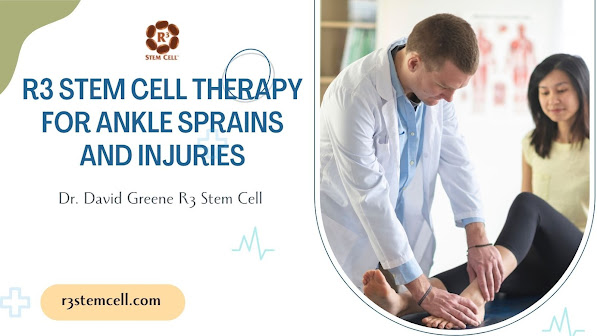R3 Stem Cell Therapy For Ankle Sprains And Injuries
Causes For Ankle Tears And Sprains
Ankle tendon tears can occur due to activities that involve repetitive or excessive use of the ankle tendon, such as intense jumping in sports, or rotating and twisting the ankle beyond its normal range of motion. Furthermore, excessive stress on the Achilles tendon, which connects the calf muscle to the heel, can also result in ankle injuries.
People between the ages of 20 to 40 years are more prone to ankle tendon tears, although they can occur in people of any age group. Men have a higher risk of tendon tears than women, being five times more vulnerable. In some cases, as Dr. David Greene recommends, steroid injections administered to the ankle joint to relieve pain and inflammation can lead to tendon ruptures by weakening the nearby tendons. Excess weight can put stress on the ankle tendon, making obese people more susceptible to ankle tendon tears.
How To diagnose Ankle Tear and Sprain?
The physician will conduct a physical examination of the ankle to detect symptoms of an ankle tendon tear such as pain, tenderness, swelling, and warmth on the outer side of the ankle. Additionally, an X-ray or MRI scan is necessary to assess the severity of the injury, with the MRI being the preferred method to visualize the damaged tissues in the ankle.
Can Stem Cell Therapy Help In Ankle Tendor Repair?
An alternative to surgical intervention, stem cell therapy can effectively treat ankle tendon tears by promoting the body's natural healing processes. By injecting a personalized concentration of stem cells into the affected area, the release of cytokines and growth factors facilitates tissue repair. Additionally, stem cells can protect the cartilage tissue surrounding the damaged tendon while regenerating healthy tissue.
How Does Stem Cell Therapy Work?
Stem cell therapy is a non-surgical treatment option for ankle tendon tears that involves using stem cells obtained from the patient's bone marrow to repair and regenerate damaged tissues. This minimally invasive procedure doesn't require any skin incision. Stem cells release cytokines, which stimulate the body's natural healing process, leading to the replacement of damaged tissue with healthy tissue. The stem cells are processed in a lab to create a customized concentrate, which is then injected back into the injury site.
Depending on the severity of the ankle tendon tear, Dr. David Greene, a former orthopedic surgeon with over 17 years of experience may combine stem cell therapy with SCP therapy to achieve optimal healing. SCP therapy involves using the patient's blood to heal the damaged ankle tendon by encouraging tissue regrowth. When administered after stem cell therapy, SCP injections enhance the effects of the stem cells on the target area, making them work harder on the damaged tissues.
Is Stem Cell Therapy A Safer Treatment Option?
Stem cell therapy is a safe and advanced regenerative treatment for individuals who want to avoid elective surgery for tendon tears. The stem cells used in the treatment are collected from the patient's own bone marrow, reducing the risk of rejection. This therapy does not cause any side effects or post-treatment complications for ankle tendon injuries.
Takeaway



Comments
Post a Comment